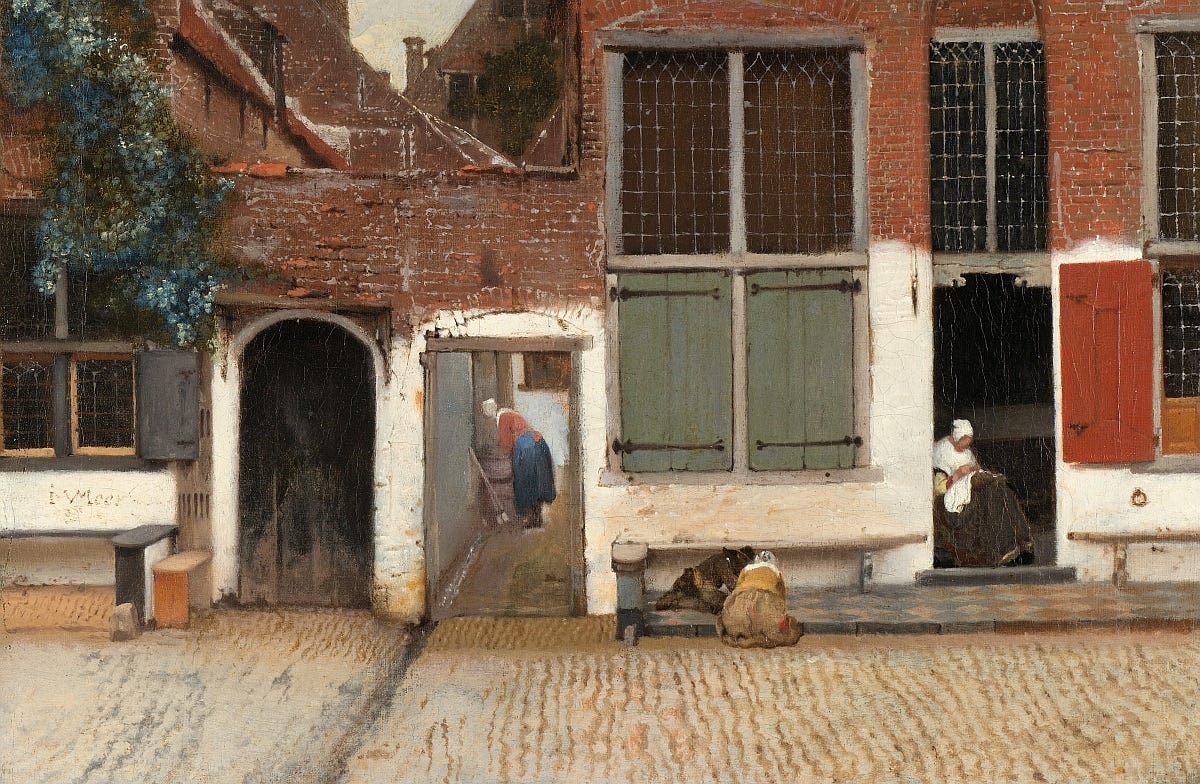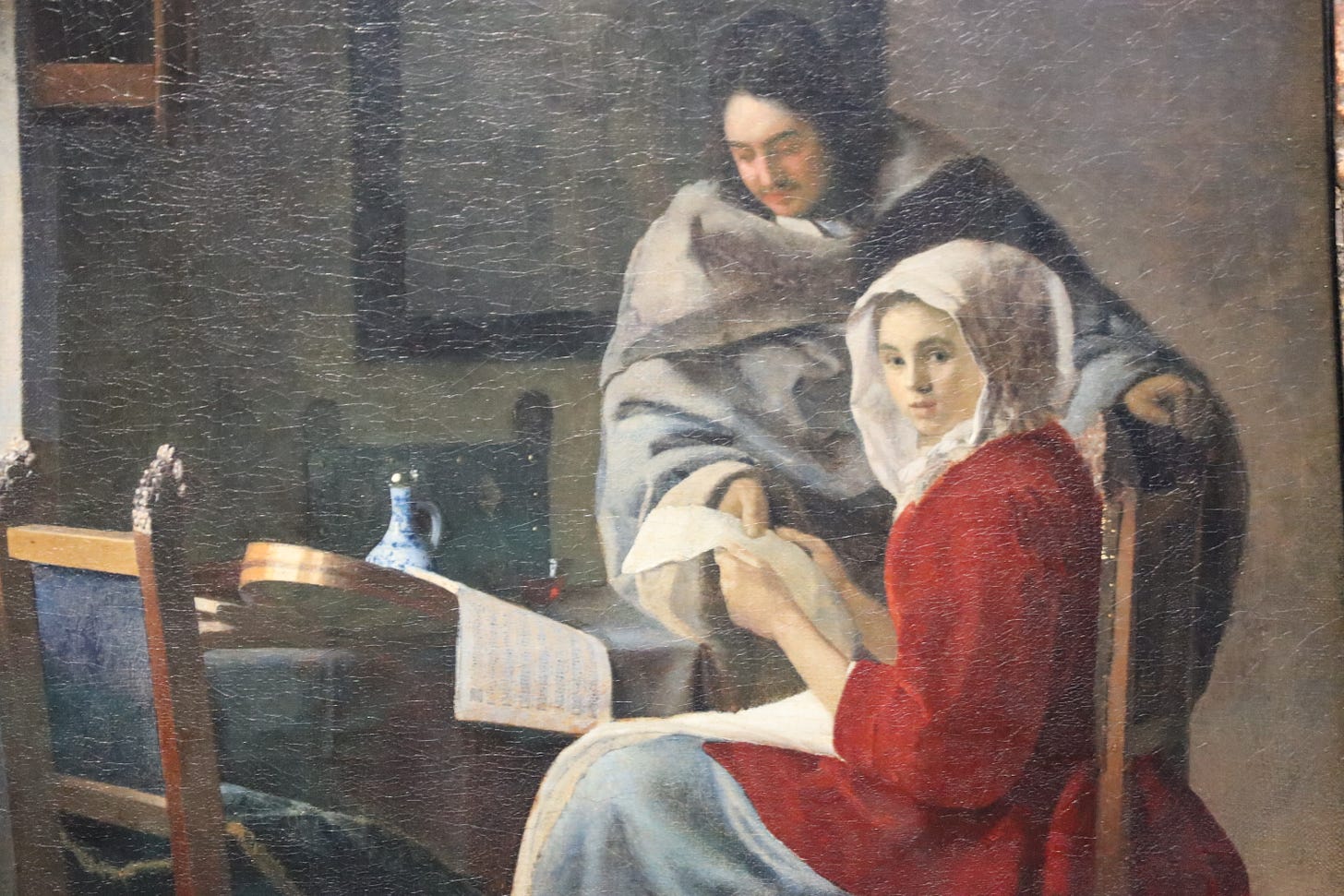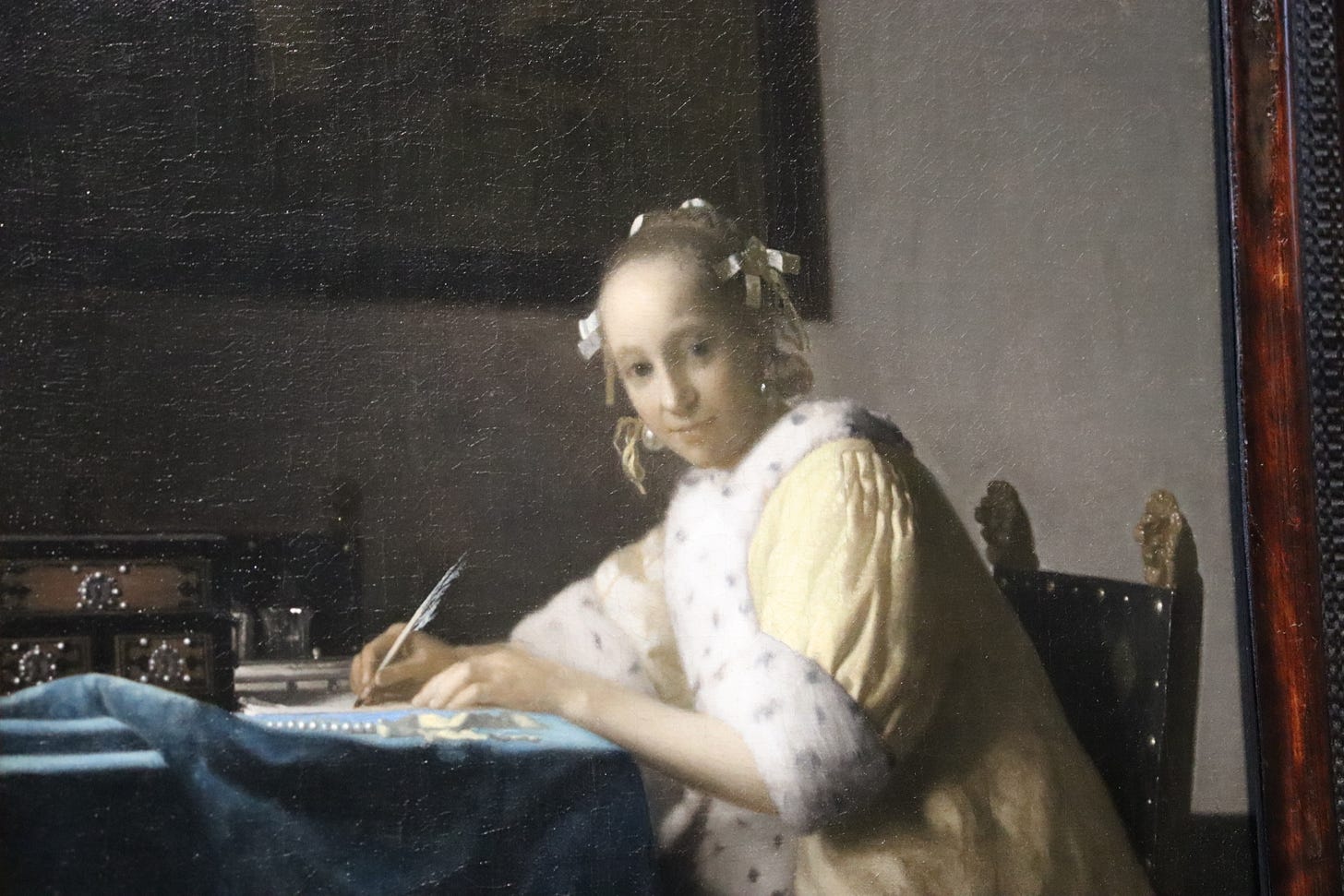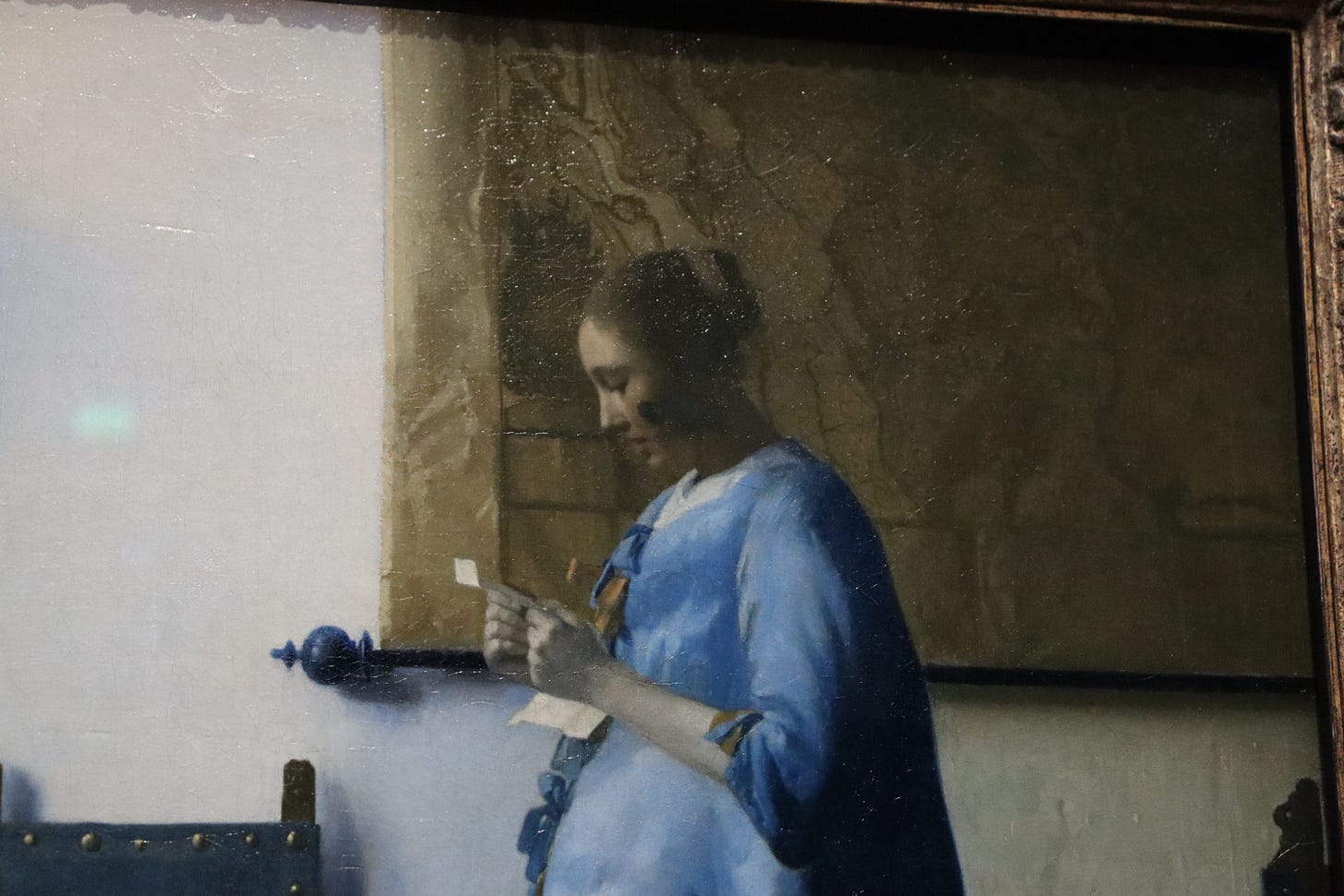It’s been about a year since I gave myself the best fiftieth birthday gift ever: a trip to Amsterdam to see the special exhibit of Vermeer paintings at the Rijksmuseum. Though I was born in late December, I booked the tickets for mid-March, when, on Spring Break from my position at a university, it would be feasible to travel. I’d get to see the full exhibit, including Girl With a Pearl Earring, which would only be available for a limited time before it returned to the Mauritshuis, its regular home. March in the Netherlands was cold, but that never stopped me from going out. In fact, I booked my ticket with Icelandair to take advantage of their layover policy, giving me a few extra days to explore Reykjavik and the south side of the island.
That trip also marked the near midway point on my transition to menopause. Perimenopause has been difficult, and it seems I’ve been destined to suffer every possible symptom: hot flashes (as many as eight times a day), night sweats, insomnia, weight gain, and other less common symptoms. The weirdest and toughest change has been the sudden onset of angioedema, which has been technically diagnosed as idiopathic but a specialist has suggested that menopause is likely the culprit. This overnight facial swelling, around my eyes and lips, is severe enough that it temporarily augments the look of my face. I wake up and literally see a different person in the mirror.
Already I’ve lived more of my life as a rheumatoid arthritis patient than not, dealing with stiff joints, swelling, fatigue and other symptoms. Menopause has felt like a pile on.
I’ve read about how women in their 40s and 50s, going through menopause, often feel invisible. The truth is, menstruation and menstrual health is a hushed topic. How many times had I slunk off to the restroom, careful to hide a tampon from view? It should come as no surprise then that perimenopause and menopause are topics that also don’t get serious attention. And, as I’ve shifted from being someone who menstruates to someone who doesn’t, I’ve tried to tamp down my anxiety and explain to myself the sudden seismic mood shifts that rush in like wind off the North Atlantic.
At the same time, I’d found that looking at specific paintings provided a calm I couldn’t explain. These were the women painted by the 17th-Century artist Johannes Vermeer, and so, for reasons I couldn’t entirely explain, I bought tickets to what was called by some “a once in a lifetime exhibit.”
I was joined by over 650,000 other ticket holders who also went to see the largest collection of Vermeer’s work ever to be shown in one place, a show that would quickly become sold out. I ended up spending over four hours with 28 paintings (most of the artist’s 34 known works). It was only when my legs began to give out and my stomach rumbled, demanding lunch, that I finally left the exhibit hall.
But if I thought seeing these paintings would quench my thirst for Vermeer, I was kidding myself. I have thought about them, read about them, viewed them online, looked at my own snapshots of the them from the exhibition, numerous times since, and these paintings never cease to bring me moments of calm.
I’m not an art historian; I can only tell you snippets about the formal attributes of the Vermeers. He has been hailed as a master of light, something that I recognized vividly when standing among his works. But if Vermeer is a painter of light, he is, most often, also the painter of quiet.
Quiet is what my menopausal self yearns for more and more often.
Even his landscapes (of which there are only two) exude quiet. The Little Street depicts a house on what one can easily deduce is a side street. A few children huddle by the house’s edge, intent on whatever game they are playing, and an open door shows a seated woman who appears to be sewing, another in the corridor towards a courtyard, bent over working. I imagine she is doing laundry. We are far enough away that I don’t imagine much in the way of sounds—there’s just something so hushed about it.
So, too, the depictions of women doing quiet, ordinary tasks—putting on a necklace, reading a letter—things I’ve done hundreds, maybe thousands of times. What bubbles up inside me as I view these paintings is a great sense of the ordinary being worthy of artistic depiction. What happens when we see quiet activities rendered with care, with an eye for detail and a sense of light and shadow?
Yet, Vermeer also shows us woman interrupted in paintings like Girl Interrupted at Her Music. A man—her teacher? Her lover? Both? Neither?—stands over a pale-faced young woman who looks out at us. Her look is concentrated. Is she embarrassed? No, not quite. Annoyed? Quite possibly. We see how the man hovers over her, both his hand and hers clutching a sheet of music, her instrument on the table in front of her. Because a picture of Cupid is shown behind the figures, we are instructed to see this as a love scene. But is it? I always see that slight sense of annoyance on this young woman’s face.
And even more so in A Lady Writing A Letter. While we don’t see who has interrupted this woman, quill over parchment, in her yellow jacket lined with ermine at the cuffs and collar, we stand in for that person. To me, her expression vacillates from patient to annoyed. I’ve been that woman, trying to write, only to feel the presence of interrupter, and lifting my face towards them, wear the expression of “What?” before I even utter the word.
The interrupted women, then, feel known to me.
One of my favorite Vermeer portraits is Woman in Blue Reading a Letter. I love the color blue—and judging by my experience with these paintings, so did Vermeer, who used the color often, despite needing expensive lapis lazuli to paint with. The woman is reading, one of my favorite pastimes. She is caught in the moment, as if we might see her lips moving. Much has been made about whether or not she is pregnant, which seems secondary to the act of reading. The map behind her has been said to indicate that she may be receiving news from a departed loved one, perhaps one of the many Dutch merchants at sea in the 1600s.
I suppose what I like about the Vermeers is that we are left to wonder. They are paintings of the not known, the partially apparent, a hushed sensibility that invokes our imagination. We can’t know everything about these women, their situation. Even when the men interrupt, there is the sly mysteriousness of their reactions. We are not registering something easily identifiable like anger or sadness or elation. These are less obvious emotions.
It is exactly this less obvious quality that, perhaps, draws me to these paintings during menopause. Whereas puberty brings about stark changes to the female body that feel very obvious, menopause brings stark changes that are cloaked. They are understudied yet insidious, and they disrupt the quiet we might otherwise enjoy.
I look upon these women, all younger than me now, and remember myself at that time of life during the moment of their rendering. The joy of a younger me deliberately putting on a pearl necklace. Or standing in the silent moment of reading a letter—I’m from an age where I wrote and received letters as a young adult—and feeling that rush of excitement under the outward calm. I believe there’s a way to tap into my own wisdom by relating to these paintings, for experiencing both a bit of what I felt in similar circumstances as well as being able to parse them in a way that only years of lived experience allows me.
And so, in some way the Vermeers have become a way to find an uneasy peace with a body that feels like it constantly betrays me. Viewing them, I’m outside myself.
(Note: all the pictures here are snapshots I took at the exhibit. To see them and others more thoughtfully rendered, check out the Rijksmuseum’s exhibit webpage)
Odds and Ends
In my last writing, I talked about the drama around OpenAI, and in the New York Times, Maureen Dowd takes up the subject as well in “Sam Altman, Sugarcoating the Apocalypse.”
‘Tis the season for streaming services, like Spotify, to report back to users on their activity for the year (or eleven months of it). While I was not surprised that a Prince song was my top listen for 2023, it did surprise me a bit that it is a lesser known, but awesome track, “Colonized Mind.”






